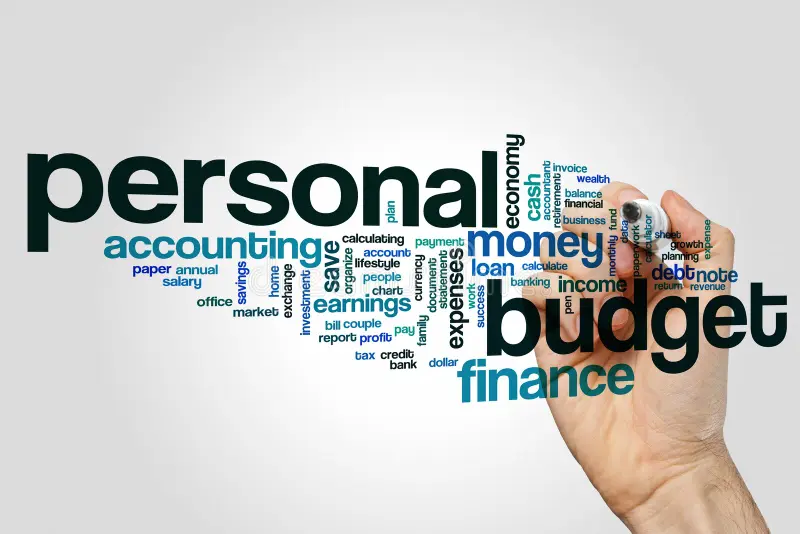Self-Care & Personal Development
Personal budget- how to make it!

Creating a personal budget is an essential step in taking control of your finances, whether you’re trying to save, reduce debt, or simply understand where your money is going. Here’s a step-by-step guide to help you create a personal budget that works for you:
1. Determine Your Financial Goals
Before you dive into the numbers, it’s important to understand why you’re budgeting. Do you want to save for a big purchase (like a house, car, or vacation)? Are you trying to get out of debt or build an emergency fund? Your goals will help shape how you allocate your money.
2. List All Sources of Income
Start by identifying all sources of income you receive each month. This could include:
- Salary (after taxes)
- Freelance or side income
- Interest or dividends from investments
- Alimony/child support
- Other regular sources (like rental income, etc.)
Add up all your income sources to find your total monthly income.
3. Track Your Monthly Expenses
Now, make a list of all your monthly expenses. Creating own personal budget can be helpful to break them into fixed and variable categories:
Fixed Expenses (Set amounts every month)
- Rent/mortgage
- Utilities (electricity, water, internet, etc.)
- Loan payments (student, car, personal)
- Insurance (health, auto, home)
- Subscriptions (streaming services, gym memberships)
Variable Expenses (These can change month-to-month)
- Groceries
- Transportation (gas, public transit, parking)
- Dining out
- Entertainment (movies, events, etc.)
- Miscellaneous (gifts, clothing, personal care)
4. Categorize and Prioritize Your Spending
Personal budget can be helpful to group your expenses into broader categories:
- Needs (essential: housing, utilities, food, transportation)
- Wants (non-essential: entertainment, dining out, luxury items)
- Savings & Debt Repayment (retirement savings, emergency fund, debt payoff)
You should also prioritize your expenses. Needs should come first, followed by savings (if possible), and then wants.
5. Create Your Budgeting Plan
There are several budgeting methods you can use, but most of them rely on tracking your income against your expenses. Below are some popular methods:
50/30/20 Rule (Basic)
- 50% Needs: Allocate no more than 50% of your income to essentials like housing, utilities, groceries, and transportation.
- 30% Wants: No more than 30% for discretionary spending like entertainment, dining out, shopping, etc.
- 20% Savings & Debt Repayment: Aim to put at least 20% of your income toward savings, investments, or paying down debt.
Zero-Based Budgeting (Detailed)
- Every dollar you earn gets assigned a job. Your income minus your expenses should equal zero. This approach helps ensure every dollar is intentionally allocated.
- For example, if you make $3,000, you’ll assign every dollar to something: rent, groceries, savings, debt repayment, etc., until your budget balances out to zero.
Envelope System (Cash-Based)
- This method works well if you prefer using cash. You physically divide your cash into envelopes for different spending categories (groceries, dining out, etc.). Once the envelope is empty, you can’t spend any more in that category until the next month.
The 80/20 Rule
- 80% of your income is for spending (needs and wants), and 20% goes straight to savings and debt repayment. This is simpler and flexible if you don’t want to dive into a highly detailed budget.
6. Track Your Spending
After creating your budget, it’s crucial to track your expenses throughout the month to make sure you’re sticking to your plan. You can do this manually with a spreadsheet or use an app that connects to your bank account and tracks your spending automatically (e.g., Mint, YNAB – You Need A Budget, Every Dollar).
7. Adjust as Needed
Your budget is a living document. Life changes, and so do your finances. If you find you’re overspending in a certain category (like eating out or clothing), adjust by cutting back or shifting funds from less important categories.
Tips for Successful Budgeting:
- Automate Savings: Set up automatic transfers to savings accounts, retirement funds, or investment accounts to make sure you pay yourself first.
- Build an Emergency Fund: Aim for 3-6 months of living expenses saved for unexpected events.
- Review Regularly: Revisit your budget monthly to adjust for changes in income, expenses, or goals.
- Avoid Lifestyle Inflation: As your income increases, resist the temptation to increase your spending proportionally. Use the extra money for savings or paying down debt.
8. Save and Pay Down Debt
Once you’ve covered your essentials and discretionary spending, the remainder of your budget should go toward savings and debt repayment. Some general guidelines:
- Emergency Fund: Build an emergency fund (3-6 months of expenses).
- Debt Repayment: Focus on high-interest debt first (e.g., credit cards) while still contributing to savings.
- Retirement Savings: Contribute to retirement accounts like a 401(k) or IRA, if possible.
Example of a Simple Budget Breakdown:
Monthly Income: $3,000
- Needs (50%):
- Rent/Mortgage: $1,200
- Utilities (electricity, water, etc.): $200
- Groceries: $300
- Transportation: $100
- Insurance: $150
- Wants (30%):
- Dining out: $150
- Entertainment: $100
- Shopping/Clothing: $50
- Subscription services: $50
- Savings & Debt Repayment (20%):
- Emergency Fund: $200
- Retirement Savings: $100
- Credit Card Repayment: $100
This is just one example. Adjust according to your actual income, priorities, and financial goals.
Self-Care & Personal Development
Personal care, what does it include!

Personal care encompasses a variety of practices and products aimed at maintaining personal hygiene, grooming, and overall well-being.
Here’s an overview of key aspects of personal care:
1. Hygiene
- Daily Routine: Regular washing of hands, face, and body to prevent infections.
- Oral Care: Brushing and flossing teeth twice daily, regular dental check-ups.
- Skincare: Cleansing, moisturizing, and using sunscreen to protect the skin.
2. Grooming
- Hair Care: Regular washing, conditioning, and styling to keep hair healthy.
- Nail Care: Keeping nails trimmed, clean, and manicured.
- Shaving/Waxing: Hair removal practices based on personal preference.
3. Skincare
- Cleansers: Using appropriate cleansers for your skin type to remove dirt and impurities.
- Moisturizers: Hydrating the skin to maintain its elasticity and barrier function.
- Treatments: Applying serums or treatments for specific concerns (e.g., acne, aging).
4. Body Care
- Body Wash and Exfoliation: Choosing gentle body washes and using exfoliants to remove dead skin.
- Deodorants/Antiperspirants: Managing body odor through regular use.
5. Mental and Emotional Well-Being
- Stress Management: Engaging in activities like meditation, yoga, or hobbies that promote relaxation.
- Sleep Hygiene: Prioritizing quality sleep through a consistent routine and a comfortable environment.
6. Healthy Lifestyle Choices
- Nutrition: Eating a balanced diet rich in fruits, vegetables, whole grains, and lean proteins.
- Exercise: Regular physical activity to maintain fitness and mental health.
- Hydration: Drinking plenty of water to stay hydrated.
7. Self-Care Practices
- Pampering: Taking time for self-care activities like baths, face masks, or spa days.
- Mindfulness: Practicing mindfulness or meditation for overall mental health.
Tips for Personal Care:
- Establish a Routine: Create a personal care routine that fits your lifestyle and preferences.
- Use Quality Products: Choose personal care products that are suitable for your skin and hair type.
- Listen to Your Body: Pay attention to how your body responds to different products and routines, and adjust as needed.
Prioritizing personal care can lead to improved hygiene, confidence, and overall well-being!
Self-Care & Personal Development
5 methods to be good results for study

While there are 5 methods to get good results for study While there isn’t a “one-size-fits-all” strategy for studying efficiently, there are techniques you may apply to increase your long-term memory and recall.
5 methods to be good results for study
1.Organise yourself
Making the effort to organize yourself can help you meet your learning objectives and position yourself for success. Purchase a journal and use it to record upcoming due dates for assignments. To ensure your participation in class, please bring all necessary materials and gadgets.
2,Intermittent Practice
Whether studying complex material or not, one of the finest methods is spaced or scattered practice. Our brains have to work harder to remember knowledge when they are on the verge of forgetting it. By spacing out your studies, you give your mind the opportunity to connect concepts and expand on information that you can quickly recall in the future.
3. Take notes:
As you improve your study strategies, you can review your notes at a later time and keep your mind active during the lesson. Taking notes in class can aid with retaining material in your long-term memory. You will want to go over these notes as you finish assignments and examinations. After class, you might find it helpful to summarize your notes so they’re concise and simple to read. Highlight or underline important points. You can ask your teacher for clarification if something is unclear. Information can also be made simpler by creating visual aids like mind maps and flow charts. These visual aids aid in the retention of complex knowledge and improve study skills for certain students. Ask a study partner or other student if you can use their notes if you are going to be absent from class. This will guarantee that your personal note-taking is flawless.
4.Study Before Bed
Learning, memory formation, and brain function all depend on sleep. Whether it’s going over notes or flashcards, studying before bed can aid with memory. You acquire new skills when you’re awake, but you hone them while you’re asleep, which makes it simpler to recall and use them appropriately when you need them most. This is crucial for both our learning process and our potential to maintain normal brain function.
5. Make a plan and follow it:
Making a schedule or plan is a great study strategy. This can assist you in achieving your study objectives and is immensely beneficial for time management. encourage you to learn, as you’ll have more time to do so. keep you organized about your work, interests, and other obligations because you can schedule your time and divide your workload into small chunks. Allow you enough time to finish your homework so that it’s not hurried or done at the last minute.

What are the steps to effectively study?
- Stay positive.
- Take pauses.
- Change your scenery.
- Ask questions.
How do you study most effectively?
Since every student is unique, there is no one-size-fits-all method for studying, and what works for one student may not work for another. It will help you understand how to study if you experiment with a variety of methods before deciding on one that suits your needs.
Self-Care & Personal Development
How can you keep your relationship flawless and strong?

It has been demonstrated that having healthy connections makes us happier, healthier, and less stressed. Research indicates that those in strong connections experience greater satisfaction and reduced stress. Though every relationship is unique, there are fundamental strategies to maintain a healthy dynamic in a partnership. I’ll explain How can you keep your relationship flawless and strong .These guidelines apply to all types of relationships, including romantic partnerships, friendships, and interactions at work and with family.
some tips for a flawless and strong relationship
1.loyalty
Mutual respect and trust are the cornerstones of the best relationships. Put your previous and new friendships and relationships to use in building mutual trust. A relationship can only last when there is trust between the two partners.
2. Avoid comparison
Give up comparing! Make an effort to maintain your position of goodness. A natural result of comparing your relationship to others is the release of anger and hatred against them. He won’t view this positively; instead, it will make him feel inadequate. Thus, develop appreciation. If he has any flaws, be sure to gently and slowly express them.
3. Share in the joy of life’s wonderful moments
Life is also full of little joys. Savour each and every opportunity that presents itself. The relationship’s ties will be strengthened by these times spent together. This is true in all kinds of relationships, including marriage and friendship. To make your partner’s special days even more attractive, you might create minor domestic arrangements and surprise him with gifts.
4. Pay close attention to what you hear
Similar to active listening, concentrating on a variety of aspects promotes the growth of relationships. In a relationship, you can strengthen your relationship with the other person and provide them with affirmation by concentrating on the little things. It is easy to speak, but harder to listen. A relationship-building ability that makes the other person feel valuable is effective listening. Ask follow-up questions, repeat comments, listen intently to what they have to say, and demonstrate your concern for them.
5. Compromise
Everybody should be able to compromise. It’s terrific quality. There is always going to be disagreement between two people on some issues. There must be an acceptance mindset because compromises are a necessary part of any partnership. But more than one side should reaffirm this agreement! There will be miscommunications and insults to values. Ultimately, though, sitting on them will not make it work. To strengthen the bond, each of them must act from their unique positions.
How to build a good relationship with your partner
- Do regular maintenance on your partner.
- Arrange for each other to be surprised on some dates.
- Improve your communication abilities. Effective communication is the foundation of strong relationships.
- Each other’s little things should be given importance.
- Nothing can be hidden from one another.
- Spend quality time
Relationship systems lack legally binding clauses. However, we need to consider how to maintain the relationship in a beautiful way. Never divide a problem into three parts; instead, find a solution on your own. We’ve covered a lot of ground today regarding how to keep up a flawless and happy relationship.So maintain these rules and have a have a happy life.
-

 Mental Health6 months ago
Mental Health6 months agoPet for mental health!
-

 Uncategorized9 months ago
Uncategorized9 months agoHow to do eyeliner for beginners in 2024
-

 Uncategorized9 months ago
Uncategorized9 months agoModern stylish abaya in 2024
-

 Fashion Accessories10 months ago
Fashion Accessories10 months agoSunglasses for All: The Guide to Choosing the Perfect Pair
-

 Diet & Nutrition5 months ago
Diet & Nutrition5 months ago100 calories of different nuts!
-

 Beauty & Skincare8 months ago
Beauty & Skincare8 months ago5 easy tips for doing manicure at home
-

 Uncategorized10 months ago
Uncategorized10 months agoHow to keep your hair beautiful and healthy.
-

 Uncategorized9 months ago
Uncategorized9 months agoThe Best 5 Elegant Abaya Dresses for Every Occasion in 2024













